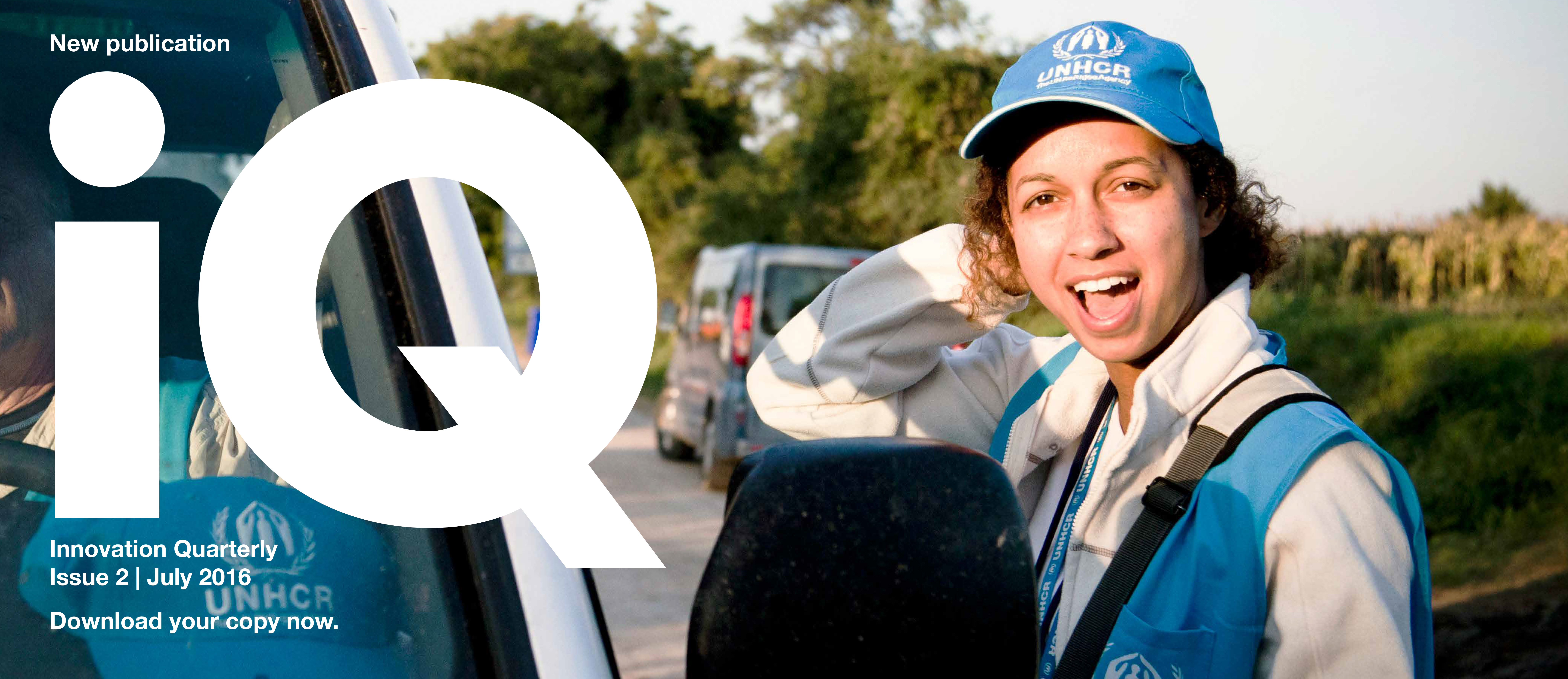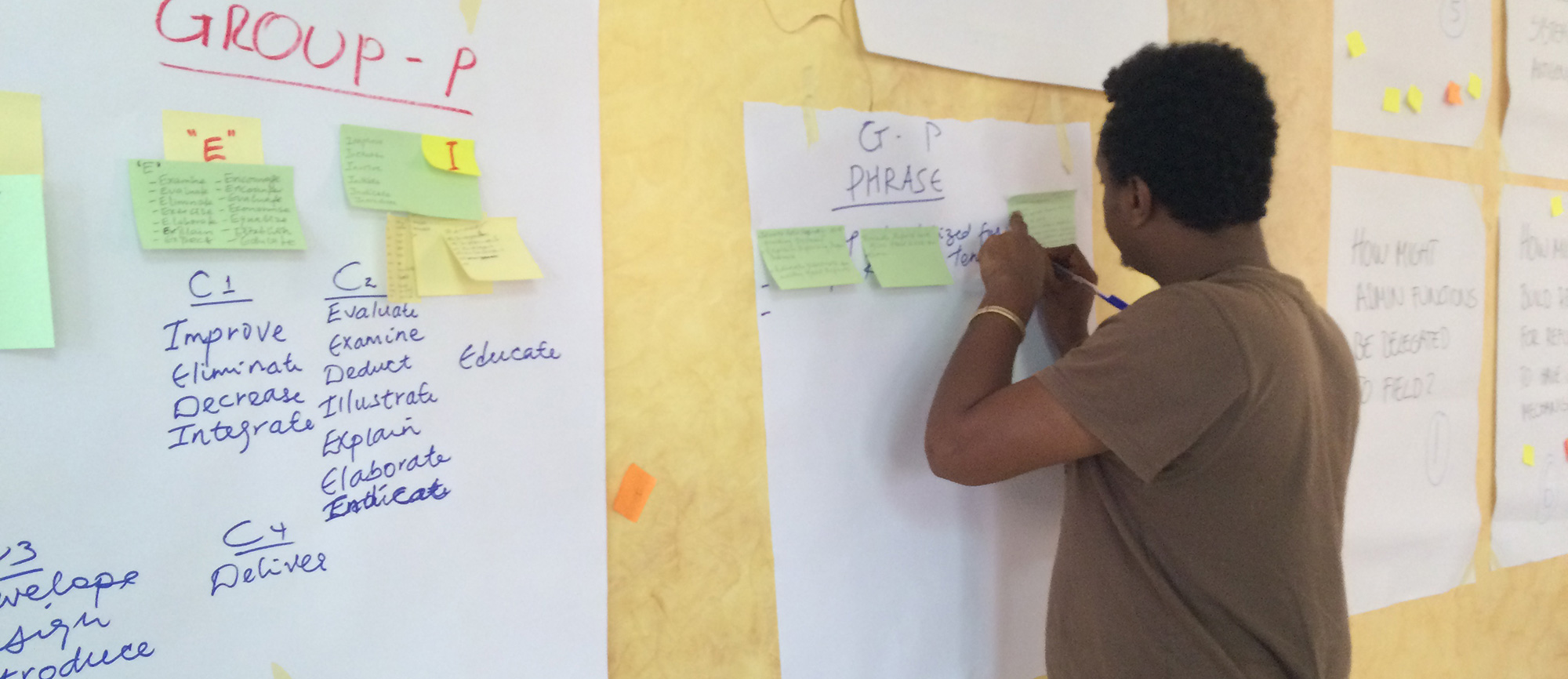Urban refugees sometimes have a wealth of assistance at their fingertips, and yet no comprehensive, up-to-date and accurate online resource to help them access it. UNHCR Innovation tackled this issue with a challenge through UNHCR Ideas and came up with a winner: a website that is simple, effective and now—scaling up to become a global solution.
At help.unhcr.org, refugees find tailored information about rights and protections in their country of asylum. HELP also lists the resources available to them in person or online, and the specifics of finding work, education, and legal advice.
“This platform is useful for your operation to provide what you consider the most important protection information [asylum seekers] should have, and taking into consideration their opinion on what type of information they need,” says Rebecca Moreno, Link Lab Manager.
The information that refugees need
For a glimpse into the site’s internal organization, information is catalogued using a green, yellow and red light system. Green information, visible under tabs labeled “Country Information” and How to Seek Help,” is public and non-sensitive and includes the facts all refugees need about things like money and housing costs.
Red information is more sensitive or political. In Europe, for example, this includes updates on onward movement and other information that is not aligned with UNHCR policy.
According to Moreno, yellow information is the information that is extremely valuable to asylum seekers and refugees. This category contains protection-related knowledge, like information about the asylum claim process itself, durable solutions options and other support programs.
That’s why although plenty of other useful and timely platforms pop up, nowhere else can refugees get complete and correct information about what documents to bring with them for claim-related appointments, what their rights are when it comes to work or travel, and resettlement information and answers to common questions.
“I believe we are one of the most positioned agencies to provide this type of information,” Moreno says. “It’s our mandate to provide it.” Furthermore, the HELP site makes this information available in the languages that refugees need it, instead of just those of host countries.
In these ways the content on help.unchr.org responds to a main criticism of the organization’s overall website: there is no specific information for my population.
Country operations put HELP to the test
UNHCR country offices benefit from using HELP too. For one, the participatory platform brings larger visibility and a coordinated face to ongoing work on livelihoods, protection, and other initiatives like special visas or scholarship programs.
Giving refugees access to direct information on the site means fewer calls or visits that take up staff time. And using a model in which country liaisons upload the information themselves with UNHCR help on translation and technology helps strengthen human capital and capacity at the country level, as UNHCR colleagues learn to use WordPress and gain other technology skills.
Costa Rica was the first country office to pilot a help.unhcr.org site, developed in consultation with refugees about the information they would have liked to have when they arrived.
To publicize the site, the Costa Rica field office distributed pamphlets about the HELP site at a national-level soccer game, billboards went up around the busy capital, and a press release issued jointly with the Costa Rican government launched a national integration campaign. One of the country’s premier movie theater chains even played a short video by UNHCR as a trailer; it showed that many refugees look just like Ticos, raising awareness about the urban refugee population in San Jose.
The publicity has worked in Costa Rica, where some months its HELP site saw nearly 2,000 visitors.
That translates into thousands more informed refugees. And although they can find the information on various sites if they know where to look, Moreno thinks duplication or competition should never be a concern when it comes to providing information.
“Information is protection- that’s the main message we want to give,” she says. “It’s our duty to provide as many channels as possible…”
Based on Costa Rica’s experience, Brazil started its own pilot, challenging developers to provide useful information in a complex context where special refugee populations from West Africa, Syria and Haiti have their own set of needs and questions.
Pilot sites built for Malaysia and Senegal followed. In Senegal’s case, most of the information was already in one place—a booklet handed out at kiosks to urban refugees living in Dakar. Since the information was already public and cleared, it just needed to be translated and uploaded. Moreno hopes that approach can be adapted as other countries launch their own help sites.
HELP is slated to launch next in Niger, the first country to pilot the site for a refugee population that has very low Internet connectivity.
HELP plans to go global
Now plans for HELP are even broader: UNHCR’s Digital Engagement team is committed to expanding the prototype and “graduating it” to the global website.
The process started with an agreement in February 2016 and should be finalized by the start of 2017.
“This means the project is going out of the Link Lab and scaling up to become a global solution for access to basic protection information to refugees,” says Moreno.
“Help.unhcr.org will ideally become one of the most important channels for information provision in a world that is increasingly more connected.”
Country offices will still be the owners of the information, the first contact for refugees and the main information providers. But the global handover means that the global digital engagement team will handle coordination.
Moreno concedes that country offices hoping to launch a HELP site take on the responsibility of managing another communications channel, with all the updating and responding that requires. The handover presents challenges as well, since it will require a great coordination effort between the digital engagement team, regional bureaus, local staff, translators and others to have the most up-to-date information on the site.
But it represents a huge success for the site, and great promise for country offices and the refugees they serve.
“For UNHCR Innovation, this is the ideal exit strategy of a project incubated in a Lab,” Moreno says. “Becoming embedded to the organization by mainstreaming an innovative solution at a global scale.”
She wants interested country offices to know that her team is committed to responding to their needs, and providing technological and management support.
“It’s an open invitation and an open call,” she says. “Just contact us and we’ll put together the whole process. It could be short or long but it’s doable.”
In future phases of the websites, country communication teams can add more interactive elements that allow for better back and forth communication with refugees. And looking ahead, Moreno hopes that HELP can be handed off to the digital communications team and become part of the larger, soon-to-be revamped UNHCR site.
For that to happen, many country offices would need to build their capacity to upload information and keep it up to date. But with support and coordination provided by the global team, they’d be able to do so, and respond to the real and changing information needs of refugees.
For more information about help.unchr.org, email UNHCR Innovation at innovation@unchr.org
We’re always looking for great stories, ideas, and opinions on innovations that are led by or create impact for refugees. If you have one to share with us send us an email at innovation@unhcr.org
If you’d like to repost this article on your website, please see our reposting policy.









